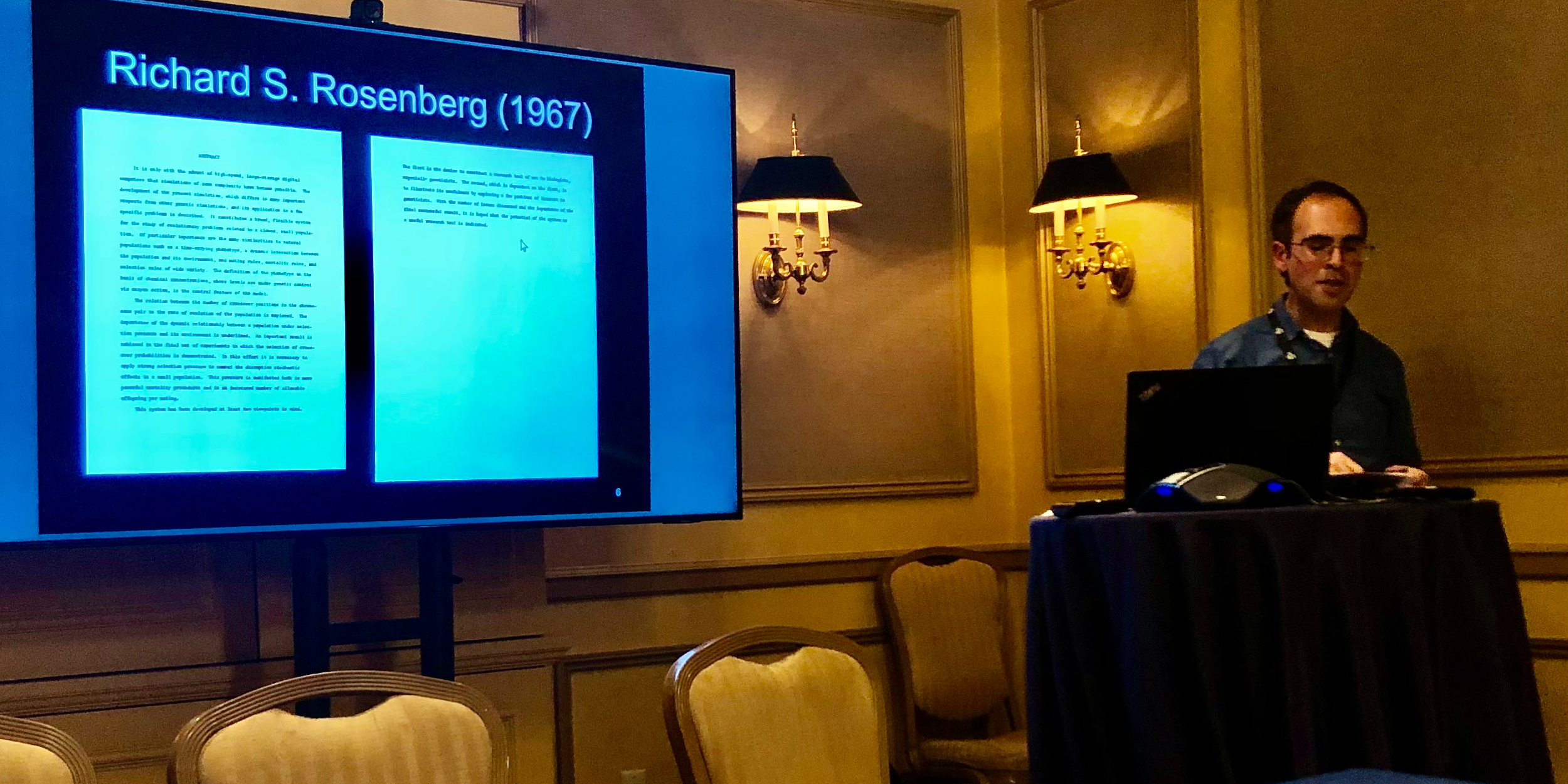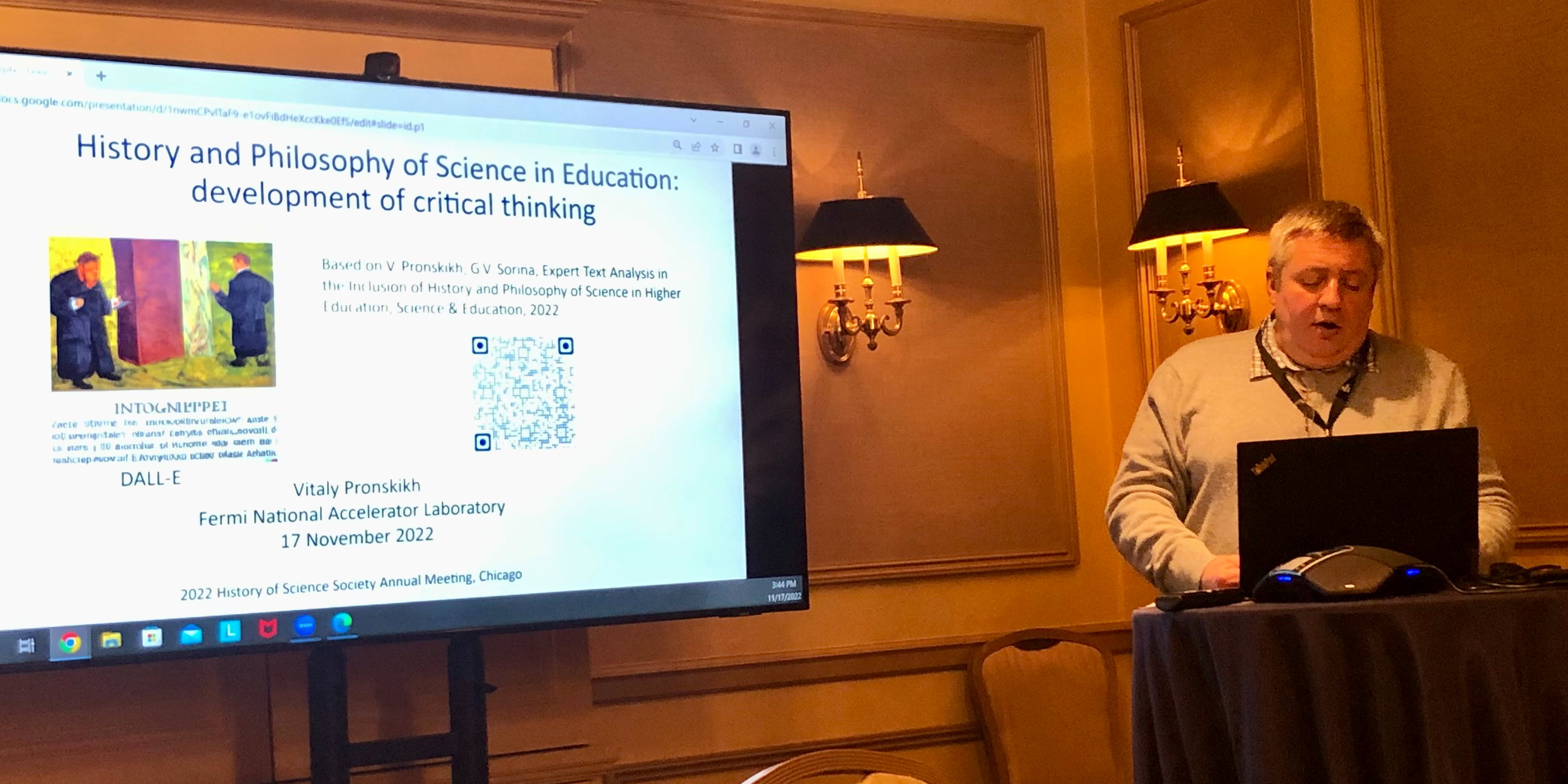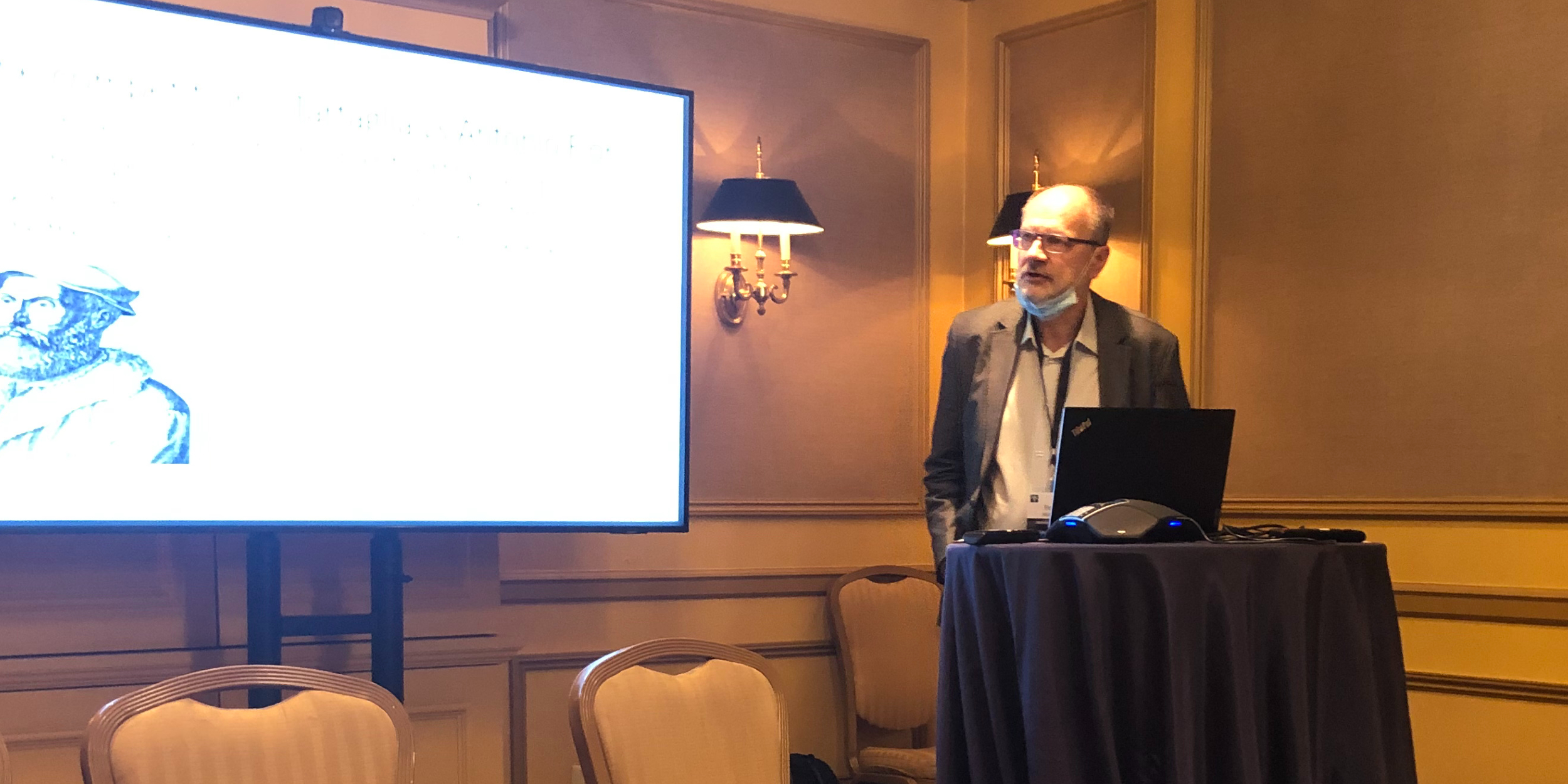
|

|

|
IASCUD held a symposium organized by the President of IASCUD, Madeline Muntersbjorn, at the History of Science Society (HSS) Meeting, 17-20 November 2022, Chicago, IL, USA.




“Productive Dispute in the History of Science and Mathematics”
The proposed session brings together case studies wherein scientific knowledge grew, not in spite of disagreements between scientists and mathematicians, but precisely because the participants involved disagreed. Recently, Massimi (2021) has suggested that productive scientific disputes often center on big picture questions such as justificatory principles or methodological points of view, rather than on scientific knowledge claims themselves. By bringing together case studies of scientific disagreement from different scientific disciplines, including algebra, biochemistry, computer science, and physics, the session seeks to interrogate this distinction between general methodology, on one level, and specific knowledge itself, on another level. Further, Pronskikh and Sorina (2021) argue that in teaching methodological strategies to future scientists, one should not only focus on consensus but also show students how conflict can be useful. By discussing productive scientific disputes, we not only develop insight into how scientific knowledge is cultivated over time, but also generate case studies to share when training future scientists.
Solving the Cubic Equation
Peeter Müürsepp, Tallinn University of Technology
There is a version of the story that Niccolo Tartaglia came into contact with a mathematician Antonio Fior, who was bragging about his ability to solve cubic equations. But Fior could only solve cubics in the form x3 + ax = b, which he had been taught to do by Scipione del Ferro. Tartaglia had discovered how to solve cubics in the form x3 + ax2 = b. The two men became involved in a dispute and Fior challenged Tartaglia to a competition, to decide which of them was the better mathematician. Each mathematician had to solve cubic equations posed by the other. As a result, Fior could not solve the problems in the form x3 + ax2 = b Tartaglia gave him. Tartaglia, on the other hand, claimed that in preparation for the competition, he had discovered how to solve any cubic equation. He really did complete all the problems Fior gave him, winning both the competition and a high reputation. He kept his method secret, intending to publish it himself at a later time. At this point, Girolamo Cardano persuaded Tartaglia to tell him the solution, promising not to publish it. He actually published it six years later, giving credit to Tartaglia. Nevertheless, Tartaglia never forgave Cardano for what he saw as a betrayal. In his own solution of the cubic equation Cardano first encountered what we have come to know as complex numbers.
The Oxidative Phosphorylation Disputes in Biochemistry, 1960s–1970s
Gina Surita, Princeton University
This talk explores the history and historiography of the controversies surrounding the mechanism of oxidative phosphorylation in 1960s and 1970s biochemistry. Oxidative phosphorylation was believed to take place in the cellular organelles called mitochondria, the “power plants” of the cell. Although oxidative phosphorylation was known to constitute the final stage of cellular respiration (the process by which the energy in food was transformed into that of the energy-carrying molecule adenosine triphosphate, or ATP), its exact mechanism remained unknown for much of the twentieth century and became a popular area of study in post-World War II biochemistry. Debates about oxidative phosphorylation centered around the mechanism of the coupling between oxidative processes and phosphorylation processes. In other words, how was the oxidation-reduction energy derived from the earlier stages of cellular respiration (glycolysis and the Krebs cycle) finally transformed into the phosphate bond energy of ATP? Much has been written about the oxidative phosphorylation debates, and this talk aims to critically assess historical narratives of the so-called “ox phos wars” and to point toward new ways of framing this biochemical controversy.
Genetic Algorithm between Biology and Computational Mathematics: Dispute at the University of Michigan, 1967-1970
Andrew Fiss, Michigan Technological University
The genetic algorithm, a computational tool used in diverse scientific fields, developed through productive dispute at the University of Michigan from 1967 to 1970. In Ph.D. dissertations for the departments of genetics, computer science, and mathematics, students R.S. Rosenberg, D.J. Cavicchio, and J.D. Bagley developed novel features of a computational tool that they separately used to simulate naturally-occurring genetic populations, develop artificial intelligence through “simulated evolution,” and prove mathematical features of natural and computational “adaptive systems.” Disagreeing with John von Neumann’s earlier claim that computational innovation could not appeal to nature because of scientists’ lack of understanding, all three Ph.D. dissertations constructed computer models that took inspiration from evolution by natural selection. Designating the chromosomes, fitness, and ultimately reproduction of computer entities, these students produced work about natural systems, computational systems, or the links between the two. In doing so, they faced methodological disputes in the differing expectations of their graduate programs’ disciplines, as well as the difficulties of pursuing cross-disciplinary work that purportedly could not be done. Moreover, their dissertations exemplified an enduring feature of algorithmic work – now often subsumed – of moving between the computer and the natural world. Arguing for the primacy of biology or computational mathematics, the Michigan dissertations used disciplinary disputes to argue for algorithms that existed in the space between.
From intuitive judgements to productive disputes: Philosophical education of future scientists
Vitaly Pronskikh1, G.V. Sorina2
1 Fermi National Accelerator Laboratory
2 Lomonosov Moscow State University
Contemporary teaching methodologies (Erduran and Dagher 2014) offer perspectives on the nature of science that highlight the epistemological, social, and political aspects of science as a social institution broadly bearing on the history and philosophy of science. When teaching methodological principles to science students, it is of utmost importance to focus on the contradictions and conflicts of various positions because this enables students to advance in their understanding of scientific and philosophical problems. As emphasized by Massimi (2021), the disagreements regarding ontological realism place the focus primarily on methodological principles and foundational questions. We discuss how, in our approach to teaching HPS and scientific methodology to graduate students in natural sciences and technology (Pronskikh and Sorina 2021), we initiate productive discussions by first interrogating students regarding fundamental questions, such as the relationship between the collective and the individual self in megascience, the primacy of the theoretical or empirical, and understanding laboratory concepts as social constructs. Drawing on students’ intuitive judgments, we invite them to reflect on these judgements in terms of philosophical theories, such as empiricism, post-positivism, social constructivism, or realism. This allows educators to arrive at conclusions together with students, widely practicing the META group work and a dialogic approach.
References
Massimi, M. (2021). Synthese 198 (Suppl 25): S6115–S6141.
Erduran, S., & Dagher, Z. (2014). Dordrecht: Springer.
Pronskikh, V., & Sorina, G.V. (2021). Sci & Educ.